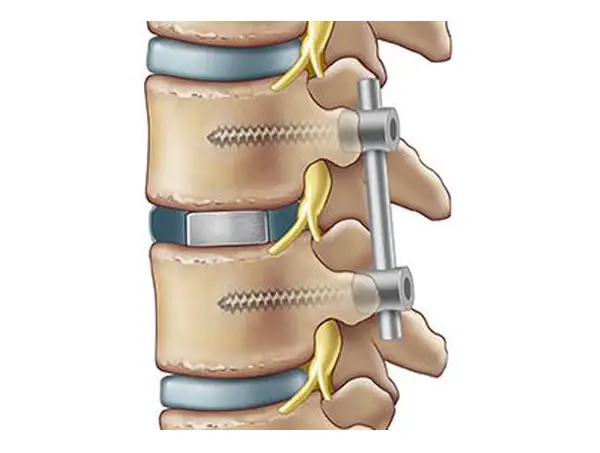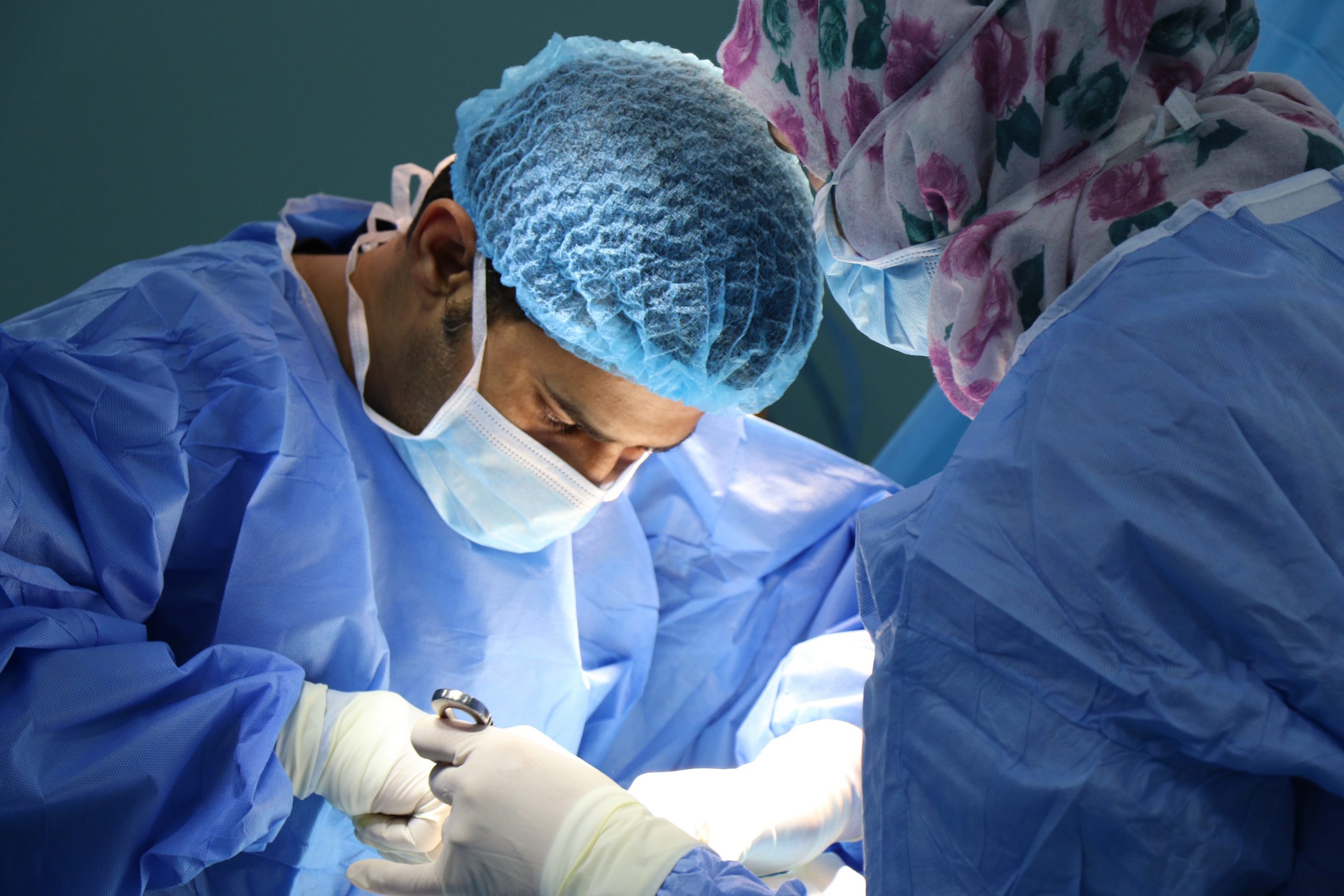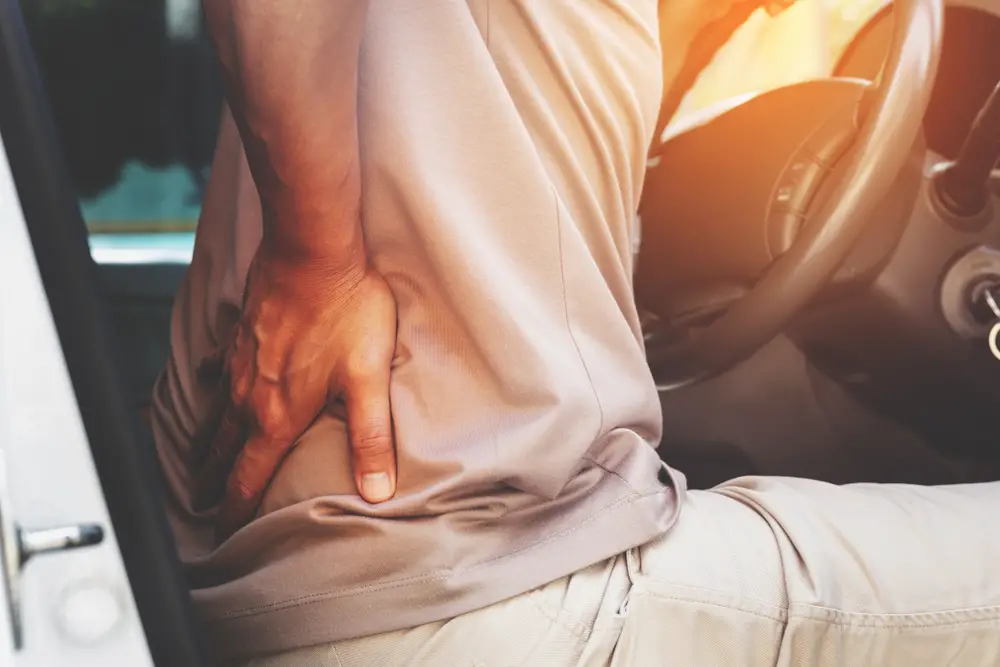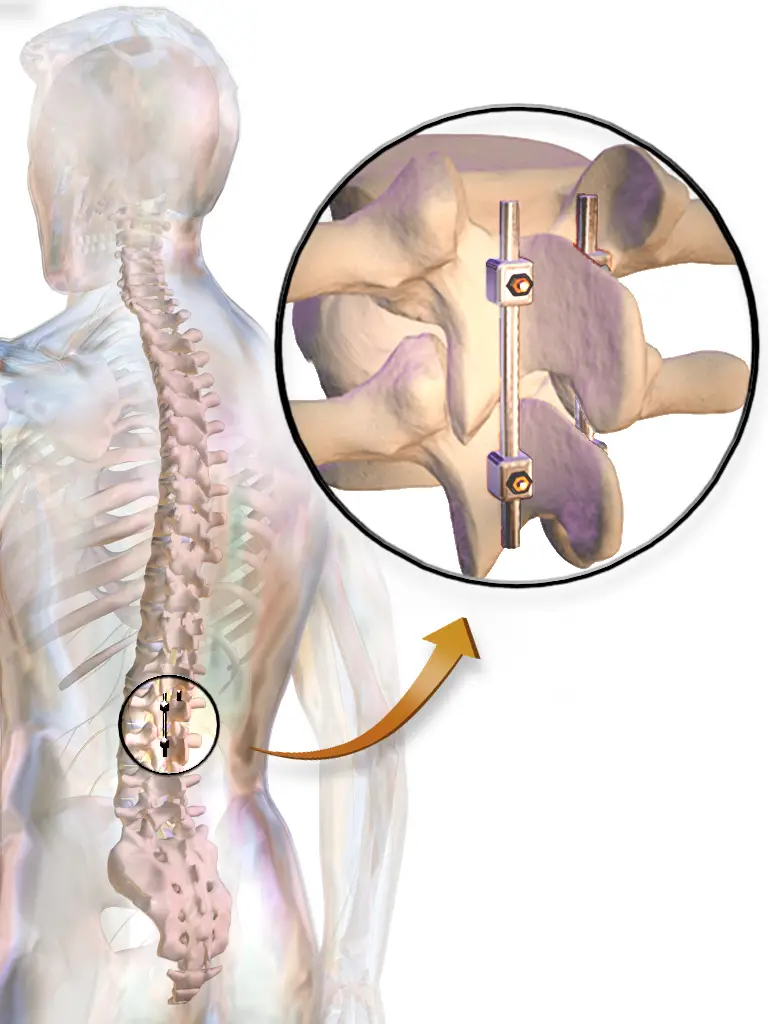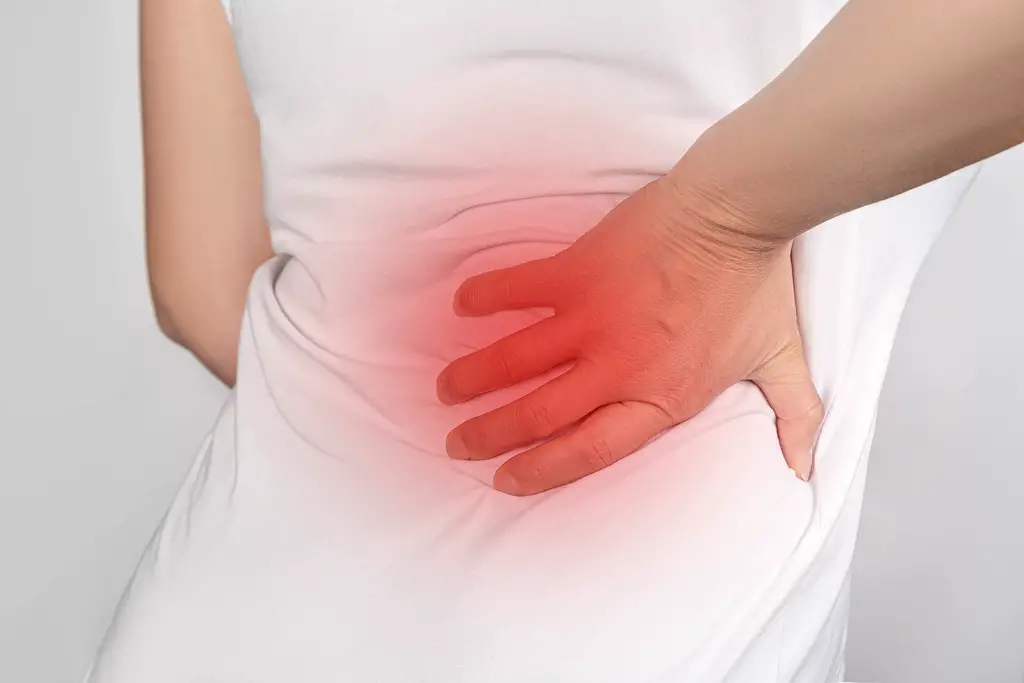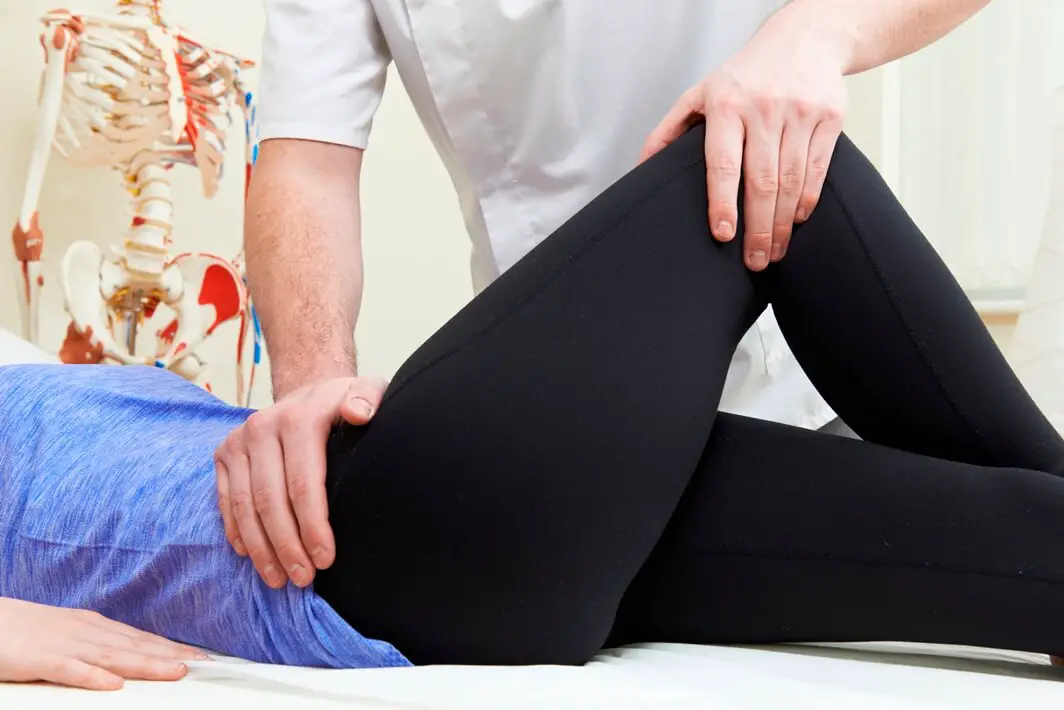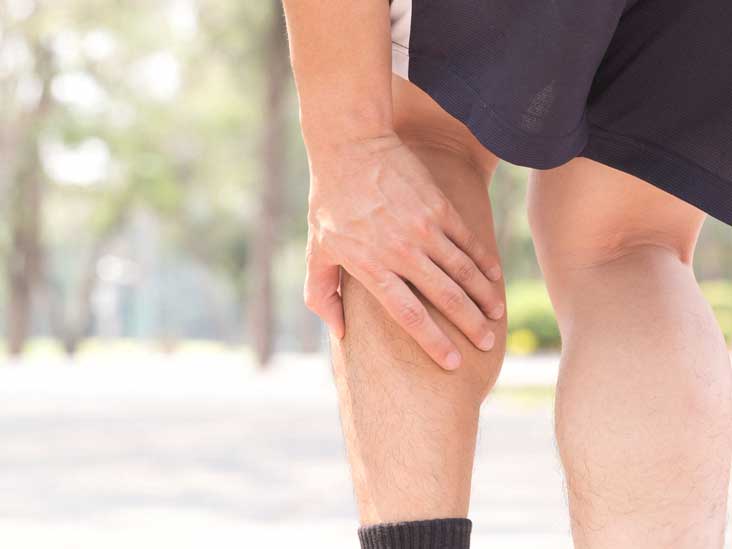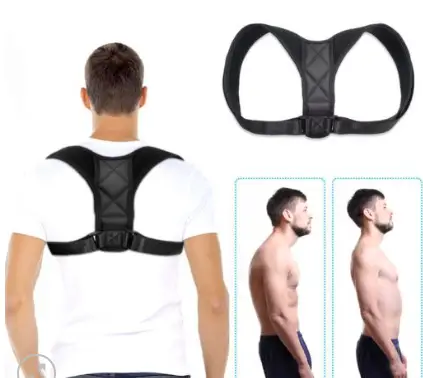Article reviewed and approved by Dr. Ibtissama Boukas, physician specializing in family medicine
You have been suffering from your back for a long time, and the surgeon told you about L4-L5 or L5-S1 lumbar arthrodesis to fuse your vertebrae and relieve your symptoms.
What is arthrodesis, exactly? Does this surgery have any complications? How is the operation, rehabilitation, and return to normal life (including work) going? This popularized article explains everything you need to know about arthrodesis.
Definition
If you have severe lower back pain, your doctor may suggest that you have arthrodesis. This intervention makes it possible to merge, or "weld", the two bones that make up the painful joint.
The bones thus become one and the same, which can lessen your pain. Spinal fusion can also make your vertebrae more stable, and help you support more weight.
This operation can be performed on several joints (wrist, finger, knee, ankle, etc.). At the lumbar level, here is a list of conditions that sometimes require lumbar arthrodesis:
- Lumbar osteoarthritis
- Zygapophyseal osteoarthritis
- Disc degeneration
- Herniated disc
- Spondylolisthesis
- Narrow lumbar canal
- Scoliosis
- Lumbar instability
- cauda equina syndrome
What are the types of lumbar arthrodesis?
There are 3 types of lumbar arthrodesis. Although these approaches differ depending on the patient (physical condition, age, symptoms, need for nerve decompression, etc.), the success rate of arthrodesis is generally high.
Lumbar arthrodesis by posterior approach
The opening will be at the level of the back. It is realized either by a open surgery », which requires a large skin opening to allow the surgeon to visualize the operated area, that is, under endoscopic control (using an endoscope).
Lateral lumbar arthrodesis
The incision is made on the side of the stomach. It is indicated to treat degenerative disc diseases, spondylolisthesis and degenerative scoliosis. Its aim is to remove the diseased disc causing the pain and thus block mobility between two vertebrae.
Anterior lumbar arthrodesis
THEanterior lumbar arthrodesis takes place in the abdomen. It also involves removing the affected disc by replacing it with a bone graft.
Generally speaking, an anterior or lateral lumbar arthrodesis avoids cutting the back muscles (since the opening will be made through the stomach or flank). This generally allows for faster recovery.
Conversely, a lumbar arthrodesis via the posterior approach will involve an opening from behind under radiographic control (and therefore a scar on the lower back). One of the benefits of this approach is that it also allows for nerve decompression (if indicated) to provide even greater relief.
When (and why) do lumbar arthrodesis?
If you suffer from one of the conditions mentioned above, you should ideally follow a conservative treatment at first (unless it is a medical emergency). The goal will be to control pain and reduce disability. This type of treatment should last between 3-6 months before concluding with an improvement or a failure of the conservative treatment.
Unfortunately, it sometimes happens that non-invasive treatments (such as medication, physiotherapy or physiotherapy, osteopathy, alternative medicine, etc.) cannot overcome the pain.
In this case, we often propose a lumbar infiltration aimed at relieving symptoms and reducing inflammation.
Despite the prodigal, some conditions seem refractory to any type of treatment. With this in mind, a physician may consider arthrodesis as a therapeutic approach. The benefits of this type of operation are:
- It helps relieve spinal pain.
- It contributes to the stability of the lumbar region in a global way.
- It improves the alignment of the vertebrae.
- It allows you to put more weight on the legs and the lumbar region
Other types of decompressive surgery
Alternatives to arthrodesis include:
- Laminectomy
- Discectomy
- Corpectomy
- Foraminotomy
- Laminoplasty
- Flavectomy
- Disc prosthesis
It should be noted that the optimal surgical technique for treating the spinal compression or nerve roots remains controversial. One approach is not necessarily superior in all circumstances, and the best option will depend on patient-specific anatomical and symptomatic factors.
How is the lumbar arthrodesis operation performed?
If your doctor has already confirmed that you will need an arthrodesis, here is how this operation (which usually lasts between 1-3 hours) will take place.
Depending on the type of arthrodesis you need, you will be hospitalized for a few days, or operated on an outpatient basis (ie you will go home the same day).
Your doctor may choose to give you a general anesthetic, which will allow you to feel nothing during the procedure. In some cases, the surgeon prefers to opt for local anesthesia. This means that you will remain awake, but the operated area will be completely anesthetized.
After anesthesia, your surgeon will choose between open surgery or arthroscopic surgery (through endoscopy). During open surgery, your doctor will usually make a large incision to access your lumbar vertebrae. In the case of arthroscopic surgery, he will make several small incisions where he will insert tools and a camera to better identify the vertebrae.
Whatever the type of operation, the objective will be to remove the damaged cartilage (tissue) between the two (or more) affected vertebrae. Most often, the surgery will concern the L4-L5 and/or L5-S1 vertebrae. This will allow your bones to fuse together. Then he will use plates, screws or metal wires to stabilize the joint. This material is often permanent, and will remain in place even after healing.
To promote fusion of the vertebrae, the surgeon may also be required to remove a piece of bone and integrate it between the vertebrae. This bone graft can come from your own pelvis, heel or knee. In some situations, an artificial substitute may also be used. In short, this will allow bone growth in the intervertebral space to weld the vertebrae.
After the operation is complete, your surgeon will close your incisions with sutures or staples.
Complications and disadvantages following lumbar arthodesis
In general, orthopedic doctors believe that this procedure is safe (high success rate). The majority of patients do well after lumbar arthrodesis, and complications are rare. Nevertheless, here is a list of potential complications related to this surgery:
- Breakage or displacement of surgical equipment
- Pain at the scar
- Overload and osteoarthritis of related joints
- Infection
- Bleeding
- Blood clots
- Nerve damage
- Mal-union (absence of bone consolidation of the bone graft called “pseudarthrosis”)
- Non-union
Recovery after arthrodesis
It is normal to feel pain immediately after spinal arthrodesis. Some patients even complain of leg pain, or even hip pain. The duration of these pains will vary with each patient. The doctor will most often prescribe medication to help you control it.
Nonsteroidal anti-inflammatory drugs (NSAIDs) are a safer choice than opioids, which are highly addictive. If your doctor prescribes opioids, follow their instructions exactly, and stop taking the medication as soon as the pain subsides.
Over time, the two vertebrae will eventually weld together and stiffen. In the meantime, it will be necessary to protect the lumbar region. To do this, the surgeon often prescribes a splint or a lumbar corset for a period of 3 months.
Weight-bearing will be prohibited during the first stages. This implies that it will be necessary to avoid putting weight on the lumbar vertebrae. It is advisable to avoid sitting on a deep seat, and toavoid long car journeys for the first times. Crutches are sometimes recommended, and even a walker or wheelchair in some cases (for example, in some elderly people).
The total healing time is estimated at 12 weeks. After this time, it is possible to feel residual pain. You will still need to take certain precautions (discussed with your healthcare professionals) to avoid wearing down the spine and prevent any recurrence of injury. This sometimes involves changes in leisure, daily life (carrying heavy loads), sports and professional activities.
Rehabilitation after lumbar arthrodesis
The prescribed rest after lumbar arthrodesis surgery, although necessary, will have the effect of increasing the level of deconditioning and muscle atrophy. It's a blessing in disguise, in a way.
Therefore, it is important to consult a healthcare professional such as a physiotherapist (physiotherapist) who will be able to promote optimal healing without complications after surgery.
Some of the treatment modalities used in physiotherapy (physiotherapy) include:
- Muscular relaxation of the paravertebral muscles
- Breathing exercises
- Gentle mobilization of the vertebrae
- Stabilization exercises
- Overall reinforcement
- General reconditioning
- Education and gradual return to activities
It should be noted that all these elements are necessary after an operation of the arthrodesis type. Indeed, let's take for example an arthrodesis surgery aimed at fusing the L4 and L5 vertebrae.
As these two segments will be merged, there will be a decrease in the mobility of that particular segment. The other segments (such as the upper L3-L4 and lower L5-S1 segments) will need to work more to allow adequate mobility of the spine. Thus, these compensatory phenomena are said to potentially create hypermobile segments related to the fused joints.
To relieve symptoms on a daily basis, many people use anti-back pain accessories. Although not backed by solid scientific evidence, they may provide short-term relief. In the case of arthrodesis, they can be used but must be complemented by a proactive approach based on physical exercise. Also, it is imperative to seek the opinion of your healthcare professional before any use, in particular to be sure that they will not aggravate the condition.
The products used to relieve pain are the following (with recommendations):
- acupressure mat
- Heated lumbar belt
- Postural T-Shirts
- Ergonomic back cushion
- massage gun (especially do not use immediately after surgery)
- Lumbar and back support stretcher
What about natural remedies?
Although they are not supported by solid scientific evidence, several natural products and home remedies are used to treat various body aches and speed healing, especially for their anti-inflammatory power.
Here is a non-exhaustive list of plants and essential oils that are effective in controlling pain and inflammation:
- Turmeric : Thanks to its antioxidant and anti-inflammatory powers very powerful, turmeric is one of the most used plants in a culinary and therapeutic context. The composition of turmeric is essentially made of essential oils, vitamins (B1, B2, B6, C, E, K) and trace elements. But it is to its composition rich in curcumin and curcuminoids that we owe them and calm skin of this spice.
- REASON TO CHOOSE OUR TURMERIC CAPSULES WITH GINGER AND BLACK PEPPER – Our complex turmeric…
- POWERFUL TURMERIC CAPSULES - Turmeric is an excellent source of Vitamin C, antioxidants,…
- IDEAL AND PRACTICAL FORMULA – The powders we use are delicately harvested,…
Last updated on 2024-04-17 / Affiliate links / Images from the Amazon Partners API
- Ginger : In addition to the special flavor it brings to the kitchen and its aphrodisiac properties, ginger is a root well known for its anti-inflammatory powers. THE gingerol gives it its anti-inflammatory action. It is an active component acting on the inflammatory pain related to chronic joint inflammatory diseases, including rheumatoid arthritis, lupus, rheumatic diseases, etc. It has been proven that this active element is also effective in acting on the inflammation linked to arthritis and sciatica. Ginger also has other benefits thanks to its high potassium content and its richness in trace elements (calcium, magnesium, phosphorus, sodium) and vitamins (provitamin and vitamin B9).
- 【Natural Ginger Foot Patches】: Natural Foot Detox Patch with Ginger and…
- 【Ginger Anti Swelling Detox Patch】: Ginger Detox Patches are natural,…
- 【Removes Body Toxins】: Ginger Foot Patches helps reduce the buildup of…
Last updated on 2024-04-17 / Affiliate links / Images from the Amazon Partners API
- Omega-3s : Omega-3 are polyunsaturated fatty acids that play a very important role in the functioning of our body. They are provided by food in three natural forms: docosahexaenoic acid (DHA), alpha linolenic acid (ALA) and eicosapentaenoic acid (EPA). Beyond their action on the brain and the cardiovascular system, omega-3s prove very effective against inflammation. Indeed, they have the ability to act on the inflammatory mechanisms in osteoarthritis by slowing down cartilage destruction, thus they reduce the intensity of osteoarthritis pain. Sciatica, being most often linked to an inflammation secondary to a herniated disc, it can also respond to omega-3 provided it is consumed regularly.
No product found.
- Lemon eucalyptus: Eucalyptus is a plant most often used in the form of herbal tea or essential oil. She would have anti-inflammatory effects which give it the ability to act on the bone and joint pain in general and the pain of sciatica in particular.
- Eucalyptus Citriodora Essential Oil.
- 100% pure.
- Botanical name: eucalyptus citriodo.
Last updated on 2024-04-17 / Affiliate links / Images from the Amazon Partners API
- wintergreen : Wintergreen is a shrub from which a very interesting essential oil is extracted. It is one of the most used essential oils in aromatherapy. This oil extracted from the shrub bearing the same name, is used in massage to relieve sciatica and act like a analgesic. Indeed, it provides a heating effect thanks to its ability toactivate blood circulation locally.
- PROPERTIES ORGANIC WINTERGOOD ESSENTIAL OIL: Wintergreen essential oil is…
- DIRECTIONS FOR USE: Refer to the instructions or ask your pharmacist for advice, This…
- PURESSENTIEL DNA: A range of 55 essential oils essential for well-being in the…
Last updated on 2024-04-17 / Affiliate links / Images from the Amazon Partners API
Sequelae after lumbar arthrodesis
Arthrodesis surgery is generally safe and leaves no sequelae. On the other hand, like any surgery, one can develop deficits such as:
- Un neurological motor deficit: Depending on the pre-surgical neurological impairment, weakness, partial or even total paralysis of the lower limbs may persist
- A leakage of cerebrospinal fluid (CSF): Since arthrodesis is an invasive procedure, tearing of the meninges during surgery can cause CSF to leak
- A sensory impairment: Depending on the degree of nerve damage before and during surgery, there may be persistent sensory disturbances such as numbness or tingling of the legs, a tingling sensation in the lower limbs, etc.
- A neuropathic pain postoperative
In some rare cases, these complications are such that they require a second surgery (often urgently). On the other hand, it should be remembered that these sequelae are rare, and that it is possible to live well after lumbar arthrodesis.
Lumbar arthrodesis and labor
Here is a list of questions often asked by people undergoing arthrodesis-type back surgery.
Can you work after an arthrodesis?
What job after an arthrodesis?
What degree of disability after arthrodesis?
The answer to these questions depends on each patient's situation. If the pain or disability limits the performance of your work, it is possible that certain limitations will be imposed on the practice of your trade. These restrictions may be temporary or permanent (in which case the degree of invalidity or professional redeployment should be discussed with your doctor).
For example, the duration of prolonged sitting may be limited. Certain adjustments (such as an ergonomic seat) can increase your comfort while sitting. If your work is physical, it is possible that we limit the taking of heavy loads, and that we set a maximum weight that should not be exceeded.
If your arthrodesis was performed because of a herniated disc, it will also be necessary to determine whether this herniated disc is the result of your professional activity. Indeed, herniated disc is one of the most common occupational diseases.
If you are affected by a herniated disc, you can have it recognized as an occupational disease. For more information, I invite you to consult theAssociation of Injured Workers and Victims of Occupational Diseases.
Conclusion
Arthrodesis is an operation to fuse two bones together to treat pain and stabilize the joint. In the case of lumbar arthrodesis, the fused levels are often L4-L5 and L5-S1.
This is an operation that should ideally be used as a last resort, after going through a conservative treatment approach (physio, physio, osteo, drugs), and even after trying lumbar infiltration.
On the other hand, it happens that surgery is inevitable, for example in the presence of a major situation, or even when no other modality of treatment seems to work. In this case, arthrodesis represents a viable option that could treat your back problem.
Like any operation, it has its benefits and its risks which should be analyzed with your attending physician. Healing and return to normal life after surgery must also be carried out in the presence of a health professional.
Good recovery !

